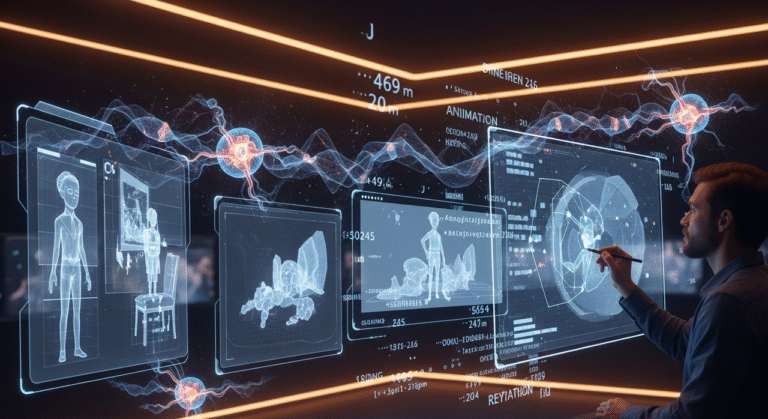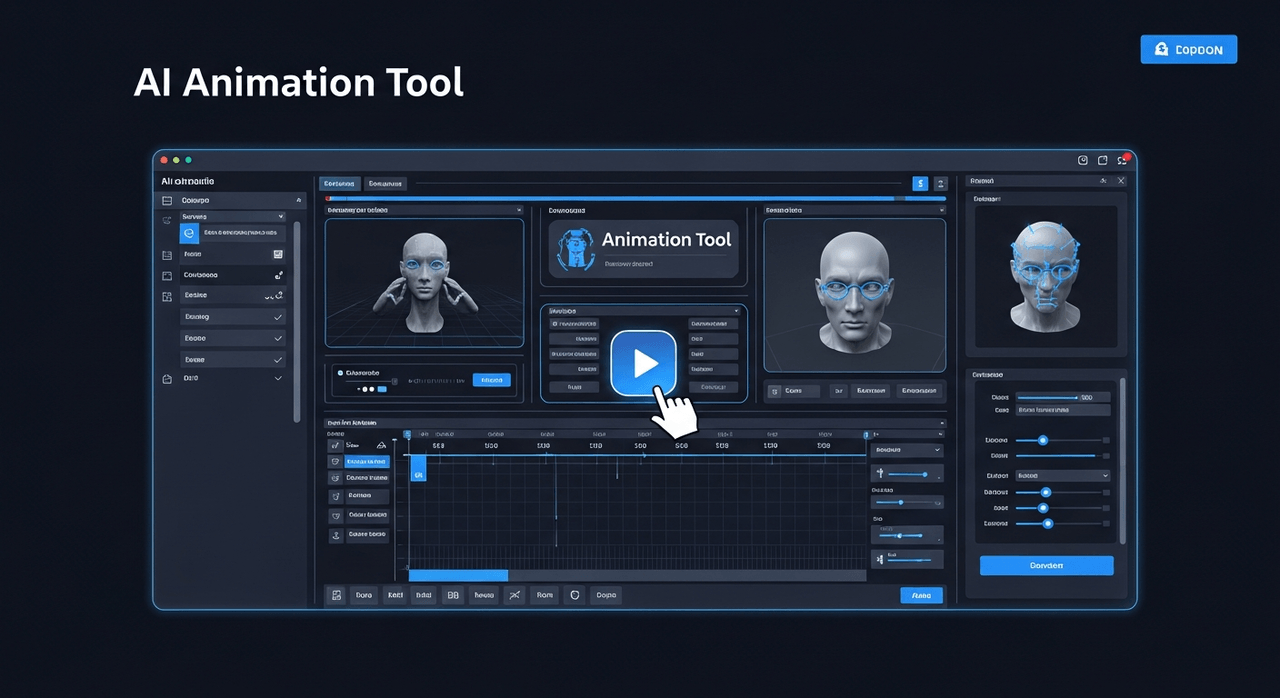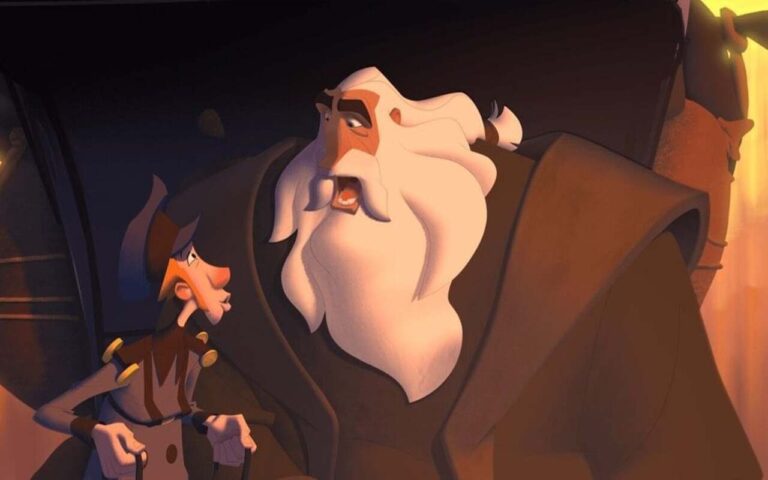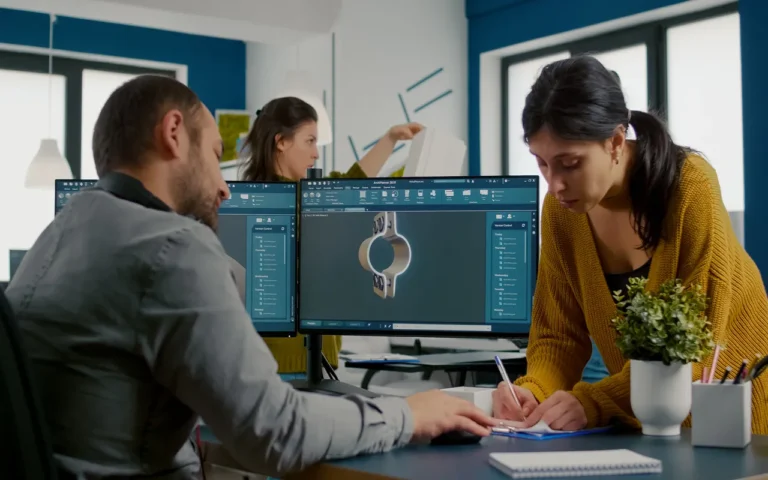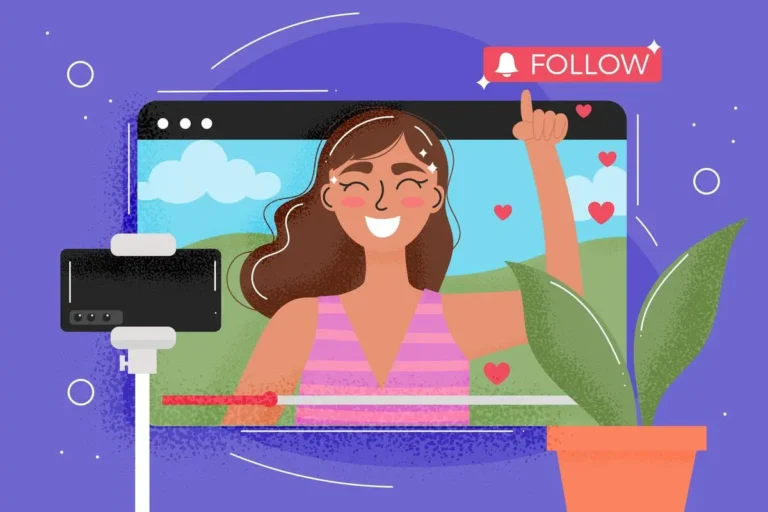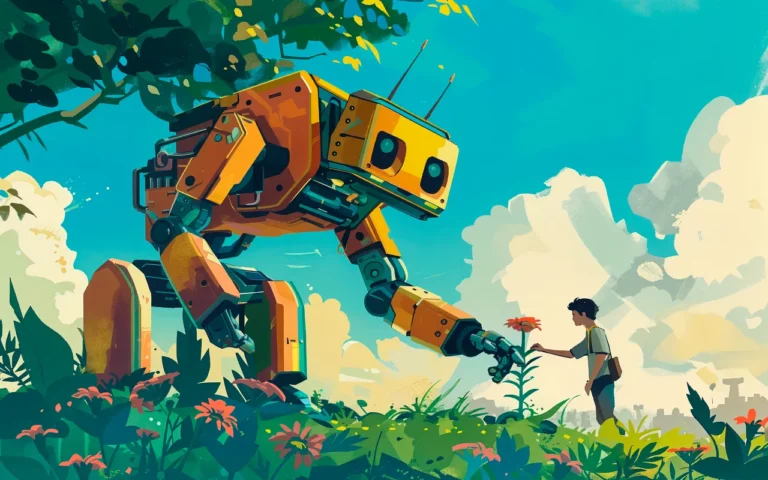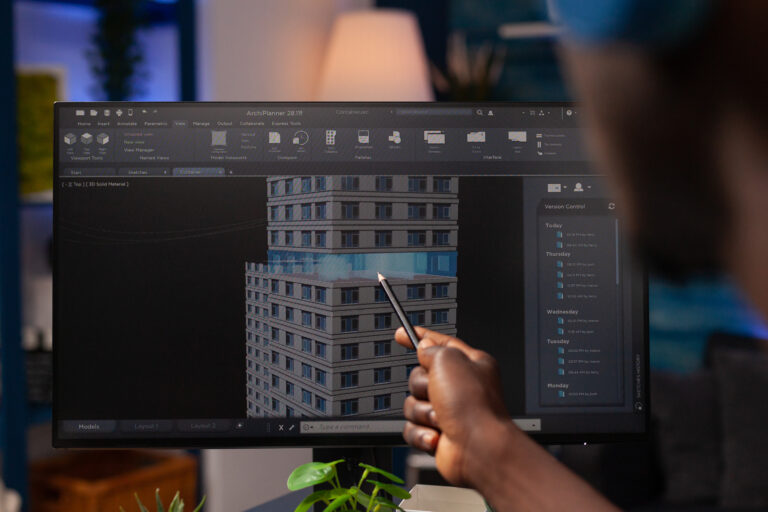You know, it’s wild – even with all the super flashy 3D stuff, incredible CGI, and games that look real, there’s just this undeniable charm about hand-drawn animation that still totally hooks everyone, from folks watching to the artists making it. Seriously, we usually just call it traditional animation, and you know what? It’s just a stunning example of real artistry, amazing skill, and honestly, the pure, unadulterated magic of making a drawing move, literally one tiny step at a time.
That’s why it remains a beloved part of professional animation services even today. So, if you’re ever thinking about getting into this industry, truly wrapping your head around what it means to be a hand-drawn animator isn’t just about learning some old history; it’s about checking out a craft that’s totally thriving and always changing.
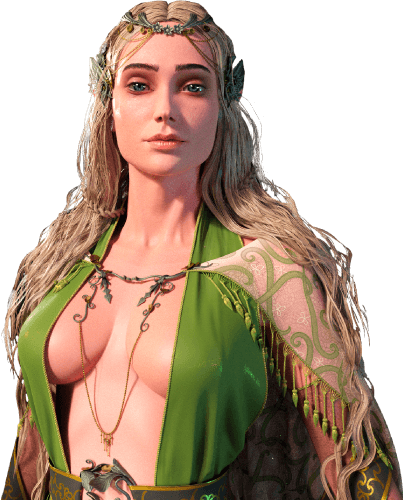
Need Animation Services?
Visit our Animation Service page to see how we can help bring your ideas to life!
Responsibilities of a Hand-Drawn Animator
So, a hand-drawn animator? They’re way more than just someone who can sketch well, honestly. They’re like a super important storyteller, literally breathing life into characters and plots with every single line they draw. Their job covers a ton of different stuff, needing this cool mix of artistic talent and really understanding the technical side of things.
At its heart, what an animator does is make things seem like they’re moving, expressing stuff, and showing personality. That means meticulously drawing every single tiny frame, so when you play them one after another, it just flows perfectly.
And it’s not just about sitting there drawing, you know? A hand-drawn animator really has to get what the storyboards and animatics are saying, grasping the animation director‘s whole vision for a scene. They’re the ones responsible for showing emotions, why a character’s doing something, and the entire story just through movement.
Honestly, a lot of the time, that means really digging in to figure out how people – or even creatures, if that’s what we’re animating! – would actually think and move, just to make everything super believable. And teamwork? Forget about it! Collaborating with other groups – like the folks sketching out characters, or setting up the scenes, or painting the backdrops – that’s just non-negotiable for keeping everything looking consistent and ensuring their animation just fits perfectly with the whole vibe.
Oh, and here’s the kicker: they also have to be absolute wizards at managing their schedule to hit those deadlines, often bouncing between a bunch of different scenes all at the same time. At the end of the day, their massive task is taking those static drawings and morphing them into these lively, expressive performances that really grab the audience and, well, just propel the entire story along.
Essential Skills
To excel as a hand-drawn animator, a diverse set of artistic skills and personal qualities is paramount. At the foundation is a strong command of drawing. This includes a deep understanding of anatomy, perspective, light, shadow, and composition. Animators must be able to draw characters consistently from various angles and in different poses, maintaining their appeal and design.
Observational skills are equally critical; the ability to study and replicate the nuances of human and animal movement, expressions, and interactions is what gives animation its believable quality. Beyond foundational drawing, a profound understanding of animation principles is non-negotiable. These 12 principles, developed by Disney animators, are the bedrock of compelling animation.
Concepts like squash and stretch, timing, anticipation, follow-through, and overlapping action, arcs, secondary action, and staging are not just theories; they are tools that animators use to add weight, personality, and realism to their characters. Patience and meticulous attention to detail are also crucial, given the frame-by-frame nature of the work.
Each drawing matters. Furthermore, strong communication skills are vital for effective collaboration within the team, and an understanding of visual storytelling allows animators to make choices that enhance the narrative purely through movement and expression. A keen eye for consistency, a disciplined work ethic, and an insatiable curiosity for movement round out the essential toolkit of a successful hand-drawn animator.
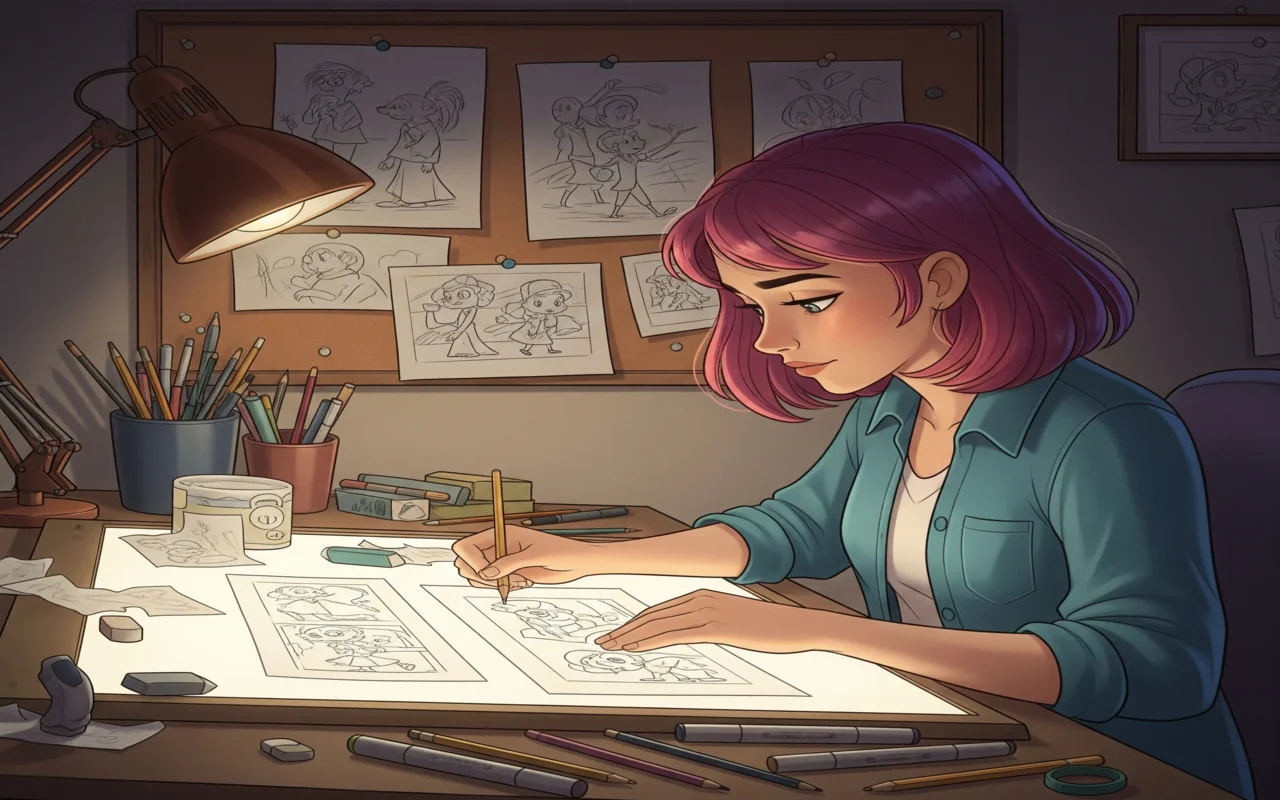
The Hand-Drawn Animation Process
Okay, let’s break down that traditional animation process into a list of steps. It’s a journey, for sure!
Here is how traditional animation generally gets made:
Concept & Script Development
First things first, you have to figure out the story. That means getting the concept locked down and crafting an outstanding script.
Storyboarding
Next, it is like drawing out a visual blueprint for the entire film or sequence. You sketch all the key moments, show where the “camera” will be, and how characters are positioned.
Animatic Creation
Once the storyboards are approved, you might make an animatic. That is essentially a rough video of those storyboard panels, timed out with sound and dialogue. It just gives you an early feel for the pacing and flow.
Character Design & Layout
Before the main animation starts, character designs get totally finalized for consistency. Then, layout artists jump in to create detailed background drawings. These actually define all the camera movements and where characters are placed in each shot. It literally sets the stage.
Key Animation
Now the real animating begins! The Key Animator, often called the “lead,” draws the most important poses. These are the “keyframes” that show the big actions and emotional beats of what a character is doing. They are the wildest points of the movement.
In-betweening
After the key animators are done, assistant animators – sometimes called “in-betweeners” – step in. Their job? To draw all the frames that smoothly connect those key poses. This is how you get that awesome, continuous motion illusion. It is seriously tough, frame-by-frame work, needing crazy precision.
Clean-Up
Once all that rough animation is finished, it goes to the clean-up artists. They are the ones who trace those rough sketches with incredibly neat, precise lines, making sure everything matches the official character design and style.
Inking & Painting (Coloring)
After the clean-up, it is off to add all the color. Back in the day, that meant carefully tracing onto clear plastic sheets called cels and painting the colors on the backside. But these days, most of that coloring happens digitally, using software that still keeps that classic hand-drawn vibe.
Techniques in Hand-Drawn Animation
So, what’s truly at the core of hand-drawn animation? It’s mastering some very specific techniques, honestly. Every single one of them, without exception, aims for one thing: creating movement that’s just… captivating, believable. And the absolute foundation without question is Frame-by-frame animation. This means each drawing is distinct, right? Just a tiny bit different from the one before.
It’s how you meticulously map out every flicker of a character’s movement, every subtle expression, every single step in their transformation. That kind of direct control, over literally every single frame, well, it allows for incredible nuance, such fluidity. You know, that’s often seen as the defining mark of traditional animation.
Now, working within that frame-by-frame method, you employ several other key techniques and, crucially, the animation principles. Take keyframing, for instance. It’s about drawing those most important poses – the ‘extremes’ that really define the action. That’s how you establish the critical beats. Then, the art of in-betweening comes in. That involves creating all the drawings that link those keyframes. The goal? A transition that feels utterly smooth and natural.
A skilled in-betweener doesn’t just fill in the gaps in a straight line; they possess a deep understanding of timing, the arcs of motion, and how actions can overlap. This is what makes the movement truly feel organic, as if it happened quite naturally.
The 12 basic principles of animation are vital tools in the animator’s arsenal:
- Squash and Stretch: Gives a sense of weight and flexibility to drawn objects.
- Anticipation: Preparing the audience for an action, making it more believable.
- Staging: Presenting an idea so it is unmistakably clear.
- Straight Ahead Action and Pose to Pose: Two different approaches to drawing. Straight ahead is drawing frame by frame from start to finish, while pose to pose involves planning key poses first.
- Follow Through and Overlapping Action: Components of a character, like hair or clothing, continue to move after the character has stopped, or different parts of the body move at different rates.
- Slow In and Slow Out (Easing): Objects need time to accelerate and decelerate.
- Arcs: Most natural movement follows a curved path.
- Secondary Action: Gestures that support the main action, adding more dimension.
- Timing: The number of drawings for an action, affecting its speed and emotional impact.
- Exaggeration: Distorting elements for dramatic effect.
- Solid Drawing: Drawing in 3D space, giving form and volume.
- Appeal: Creating characters that are pleasing to look at and engaging.
Industry Applications
You know, when folks hear ‘hand-drawn animation,’ their brains usually just go straight to those old-school Disney flicks or, like, those classic Looney Tunes cartoons, don’t they? But seriously, this art form? It’s still popping up everywhere. I mean, you see it in so many different corners of the entertainment world, and even way beyond that.
Feature films are definitely still a big deal for traditional animation. Sure, 3D animation tends to dominate the big screen, but we’re constantly seeing these incredible hand-drawn features making a comeback. A lot of the time, it’s independent studios really championing them, or it’s just chosen because that specific story needs that particular style – think Studio Ghibli or Cartoon Saloon. Those films really lean into the painterly feel and the fluid movement that only this medium can give.
Then there are TV series. Whether they’re for kids or adults, hand-drawn animation gets used all the time. It’s just so efficient, and you can create such stylized designs, which makes it perfect for making episode after episode. Tons of popular animated shows, from the really old classics to the brand-new hits, still rely on these traditional techniques, often with some digital help for coloring and putting everything together.
And get this: even commercials, even advertising, they totally jump on the unique visual vibe of hand-drawn animation. It helps them cook up campaigns that you really remember, stuff that just grabs your eye. Think about it: its knack for making complex ideas simple, or really hitting you in the feels, or just plain standing out from all those regular live-action or CGI ads? That makes it a seriously powerful way to get a brand’s message out there.

And it doesn’t stop at mainstream entertainment. Hand-drawn animation shows up a lot in independent films and various art projects too. It’s actually got a lower hurdle to get started (especially compared to massive 3D productions) for individual artists or smaller teams, which opens up enormous creative freedom and room to experiment.
You’ll often see hand-drawn elements in educational content, documentaries, and even music videos – they just have this clarity, a certain charm, and a unique way of illustrating abstract concepts. Plus, the rise of platforms like YouTube has truly empowered individual animators to make and share their own original hand-drawn stuff, fostering this incredibly vibrant independent animation scene.
So, basically, anytime you need to tell a story visually with that special, handcrafted vibe, traditional animation techniques just find their perfect home.
Tools and Materials
The tools of a hand-drawn animator have evolved significantly over time, transitioning from purely physical to a blend of traditional and cutting-edge digital instruments. However, the core principles and the act of drawing remain central.
Traditionally, the primary tools were simple yet essential:
- Pencils: Various grades for different line weights and roughness.
- Animation Paper: Special paper with pre-punched holes (peg holes) that align with pegs on an animation desk to ensure precise registration of each frame.
- Lightbox (or Light Table): A translucent surface with a light source underneath, allowing animators to see through multiple layers of paper to trace and align drawings, crucial for frame-by-frame animation.
- Peg Bar: A device with pegs that fit into the holes of the animation paper, ensuring consistent alignment.
- Stopwatch/Timer: For precise timing of actions.
- Flipbook/Flip Machine: A basic tool for quickly flipping through drawings to check motion.
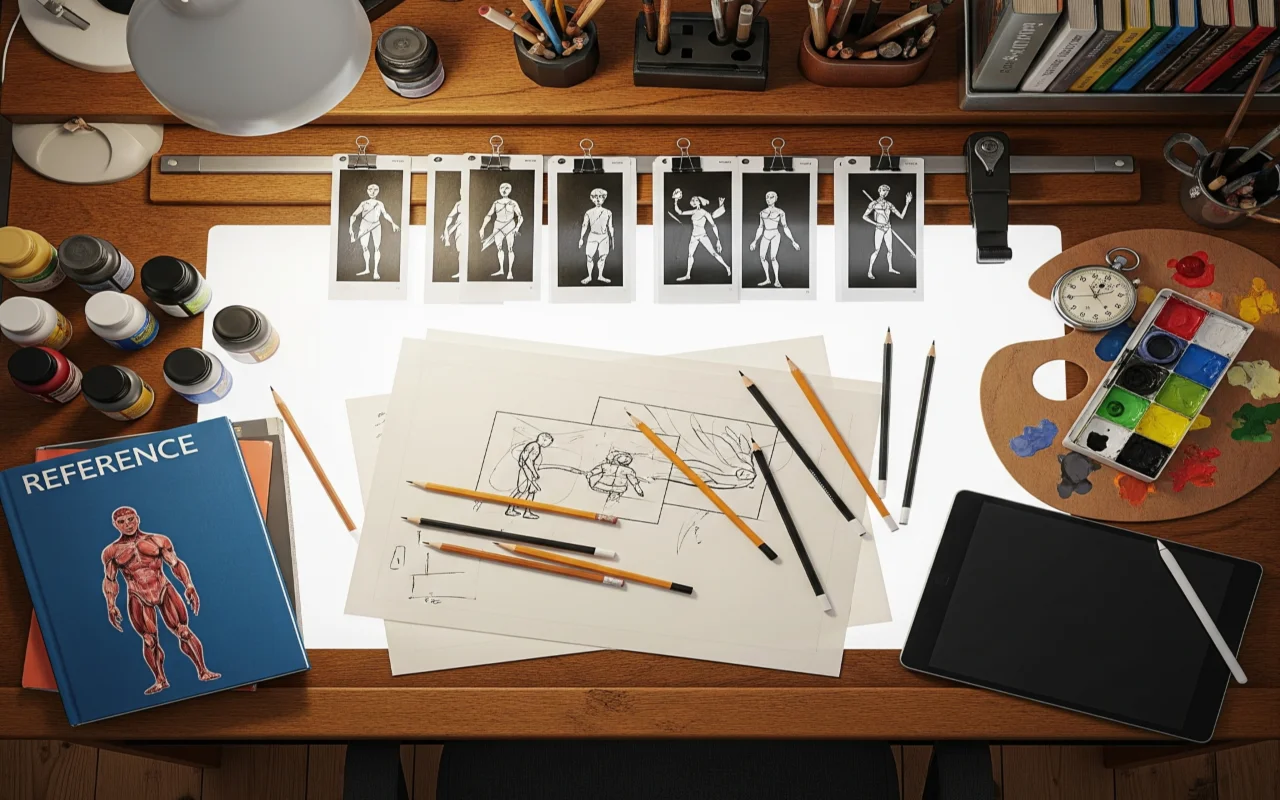
For inking and painting in traditional cel animation, materials included:
- Cels: Transparent acetate sheets on which drawings were traced.
- Ink: Special ink for tracing the clean lines.
- Cel Paint: Opaque paint applied to the back of the cels.
- Brushes: For applying paint.
Today, while some purists still embrace a fully traditional workflow, the industry has largely shifted to digital tools that emulate the hand-drawn process, offering greater efficiency and flexibility. Key software tools include:
TVPaint Animation
A powerful, industry-standard software that excels at replicating the organic feel of traditional drawing and painting, allowing for rich textures and painterly effects directly in the digital space.
Toon Boom Harmony
Another industry giant, widely used for both traditional and cut-out animation, offering robust tools for drawing, rigging (for digital cut-out), animation, and compositing, often seen in TV series production.
Adobe Animate (formerly Flash)
Popular for web animation, educational content, and some TV series, offering vector-based drawing and animation tools.
Clip Studio Paint (Manga Studio)
While primarily for illustration and comics, its robust animation features make it suitable for frame-by-frame animation, especially for indie creators.
RoughAnimator
A mobile-friendly app that offers core traditional animation functionalities.
These digital tools allow animators to draw directly on a graphics tablet, manage layers, preview animation instantly, and easily correct mistakes, streamlining the traditionally laborious clean-up and coloring processes. While the materials have evolved, the fundamental artistic skills and the commitment to frame-by-frame animation remain at the heart of the craft.
Career Path
Alright, so you’re out there, just, you know, checking out career paths in this whole industry? And you’re thinking about being a hand-drawn animator? Look, it’s definitely a super rewarding path – absolutely. But yeah, it’s also pretty demanding, too. Usually, that whole journey starts by building a really solid foundation in art, and then, obviously, getting some animation education.
People who want to be animators will head off for degrees in animation, or maybe fine arts, or something similar. Those programs load you up with tons of training: all the art skills, the animation principles, and then, of course, how to use the software.
When you’re just fresh out, just starting your career, those entry-level roles often mean you’re an ‘In-betweener‘ or a ‘clean-up artist.’ And seriously, these jobs? They are so crucial. I mean, you learn exactly how a particular studio actually operates, and you really get to sharpen all those basic skills. Then, as you pick up more experience and, more importantly, build a consistently strong portfolio, you start moving up.
Maybe as an assistant animator, working alongside the lead animators. Or you can even become a key animator yourself, which means you’re now responsible for defining a character’s main actions and all their expressions. It’s quite the journey upwards, honestly!
Further progression can lead to specialized roles such as:
Character Animator
Focusing exclusively on bringing characters to life.
Effects Animator
Specializing in hand-drawn effects like water, fire, smoke, and magical elements.
Storyboard Artist
Concentrating on the visual narrative flow before animation begins.
Layout Artist
Designing the visual staging for scenes.
Animation Director
Overseeing the entire animation team and ensuring the artistic vision is realized.
Building a strong portfolio is essential at literally every single stage of a hand-drawn animator’s journey. Your portfolio really needs to show off a whole bunch of different stuff. You want to prove you’re really good at frame-by-frame animation, right?
And that you totally get those animation principles – especially things like squash and stretch and timing. Plus, you’ve gotta have strong character design and those visual storytelling abilities, and also show you can work in different styles. It’s not just about what you draw. Networking, going to industry events, and always staying super updated with new techniques and software are also crucial.
Look, this career path definitely takes a huge amount of dedication, and you really need to be resilient. Getting to bring characters and stories to life, all through that sheer magic of hand-drawn animation, is an unparalleled reward. Seriously, there’s nothing else quite like it.
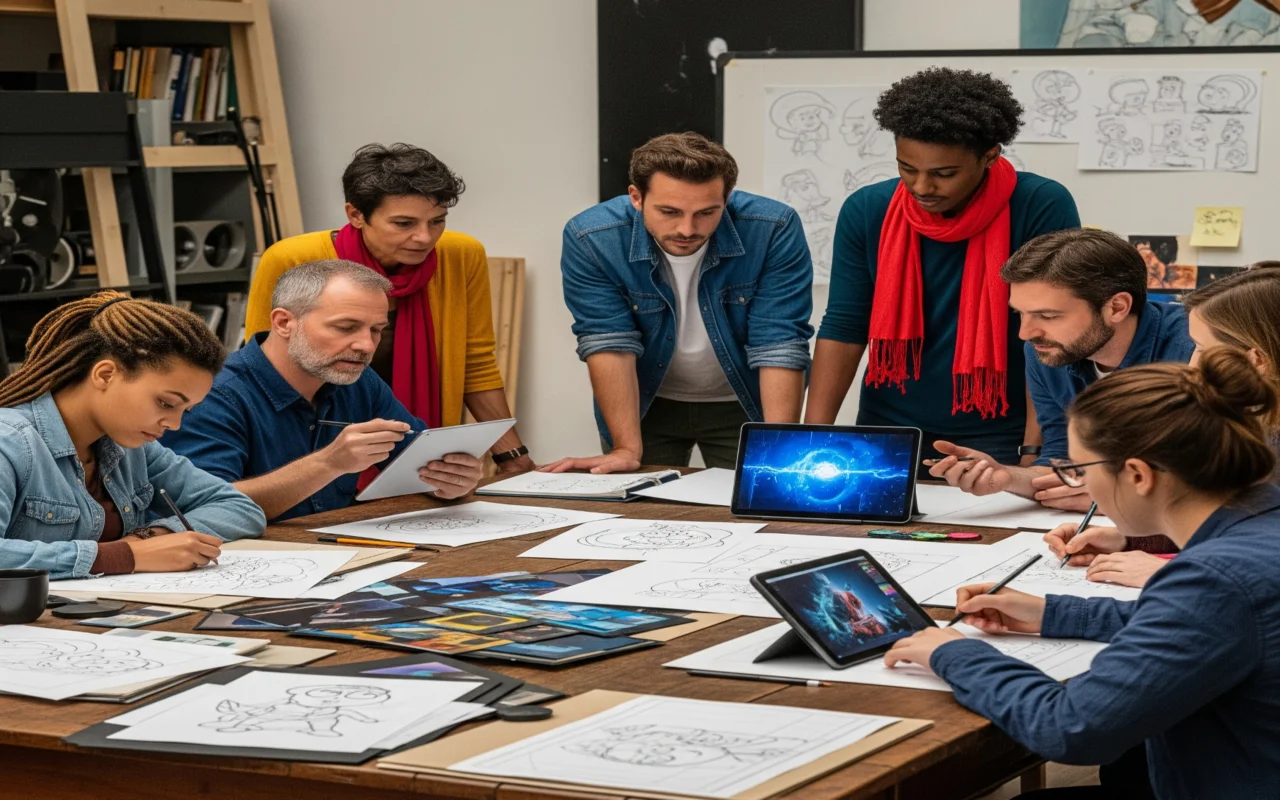
Trends in Hand-Drawn Animation
So, here’s the thing about hand-drawn animation. Even with all the 3D stuff everywhere these days, it’s not going anywhere. Not a chance. In fact, it’s actually doing this really fascinating thing – a huge comeback, honestly, and it’s totally evolving. Part of that is pure nostalgia, sure. But then there’s also just some seriously awesome new tech involved.
One massive trend we’re seeing is hybrid animation. This is where they just seamlessly blend hand-drawn elements, you know, right in with 3D stuff or live-action footage. And that gives creators unique depth, super cool artistic possibilities. Plus, people are really, really starting to appreciate that whole ‘hand-crafted’ vibe again.
I mean, in a world where everything digital is getting so polished, those visible lines, those tiny imperfections, that unique texture in hand-drawn work just bring this distinct warmth, a personality. It genuinely stands out from all the slick digital stuff. That’s why you’re seeing more of those raw, sketchbook-like styles popping up all over the place.
Beyond all that, the accessible software like TVPaint, Adobe Animate, has just completely empowered this new generation of independent animators… It’s incredible. Seriously, artists can now make feature-quality hand-drawn animation right from their own spaces. No massive studio needed! And this has sparked such a vibrant indie scene. Oh, and don’t even get me started on the educational resources!
They are just so abundant now. Online courses, tutorials, all these communities helping keep the classic techniques, those animation principles, and frame-by-frame methods alive? It ensures new talent, passionate talent, just keeps flowing in. And finally, you absolutely can’t overlook the global powerhouses, especially from Japan (hello, anime!) and Europe.
They just keep hand-drawn animation buzzing with innovation. So, the future? It’s not about hand-drawn fighting with 3D. No. It’s about asserting its unique artistic voice, embracing new tech, and just proving its enduring power for absolutely incredible visual storytelling. Because honestly, let’s face it, some forms of magic – once you create them, they simply never fade.


